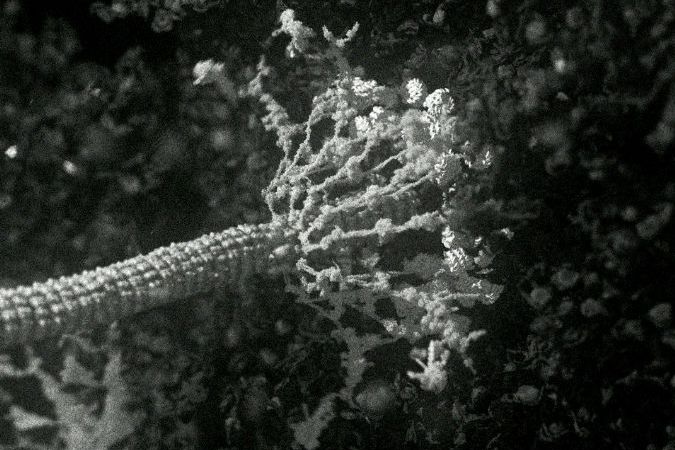
AFO Cinema to Screen Photon – Quantum Fairytale about World’s Origins
5. 11. 2018
Choosing to show the development of the universe and the human race within one feature film is a creative challenge. Two distinct filmmakers have worked on this task for many years. Therefore, we were able to see two ambitious and strongly authorial films with similar artistic concepts shortly after one another – Voyage of Time: Life’s Journey (2016) from Terrence Malick and Photon (2017) from the Polish artist Norman Leto.
Film screening on 13 November 2018 at 8 p.m. / Metropol Cinema / CZK 80
The painter and filmmaker Norman Leto started to work on Photon (2017) already in 2011. This ambitious project aims to map the development of the universe from the origins of matter to the most intricate organisms on Earth all within two hours. This film is however very distinct from a classic documentary. Its structure is set by acted-out excerpts starring the popular Polish actor Andrzej Chyra in the role of an unnamed scientist. He is interviewed by a journalist (Kaja Werbanowska) and reflects on various social and scientific topics which are then depicted in visual interpretations.
In this way, we gradually move from the beginning of the universe to the origins of life, from the beginning of life to its development, and from the human development to the birth of civilisation. The illustrative examples show the findings of quantum physics or evolutionary biology and other scientific phenomena. The turning point arrives once the film moves on to the present and looks into the near future of the universe. You will see how Norman Leto uses his research to create a film depicting the future of humankind and the entire universe once he showed us its history and present state.
While Malick’s Voyage of Time (2016) is primarily a film operating in the poetic documentary mode with all the characteristics typical for this filmmaker (poeticised dialogues, breath-taking and carefully arranged shots of emerging universe and natural scenery), Photon (2017) presents the audience with a more raw but playful spectacle. In addition to the cleverly structured narrative, it offers a strong visual experience which is very different from Malick’s approach. The origin of the universe is presented in the form of Lynch-like video-art and the film gradually transforms from the abstract to the specific. At the same time, Norman Leto has plenty of visual and filmmaking tricks up his sleeve.
His second feature film – the first was the art film Sailor (2010) – shows his wide artistic perspective and years of preparation and research. This, in many ways fascinating, project has seen several documentary festivals, including the Hot Docs Festival in Toronto and it was premiered at the CPH:DOX Festival in Copenhagen. If you missed it at the last year’s AFO International Competition 2018, AFO Cinema gives you another opportunity to see this film at the Metropol Cinema in Olomouc. Photon is an astonishing experience, a film which operates on the edge of science and art and transcends the limits of the unknown.
The screening will take place as part of the Humanities Week 2018 (12-16 November) in cooperation with the Palacký University in Olomouc.
Author: Tomáš Poštulka
Editor: Nikol Láryšová
RESERVATION FB EVENT
Photon, 2017
Academia Film Olomouc
28. – 3. 5. 2026
61ST INTERNATIONAL FESTIVAL OF SCIENCE DOCUMENTARY FILMS
Follow our social sites and explore our web to find out more about the programme. We will supply you with science dose by dose until the climax comes – AFO61.
Contact
Arts Centre of Palacký University
Academia Film Olomouc
Univerzitní 225/3
779 00 Olomouc
Czech Republic
afo@afo.cz
Quick links
Copyright © AFO 2000-2025 | web rostanetek.cz | admin







